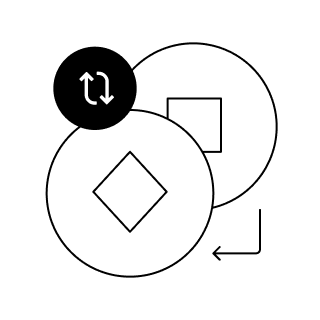What’s Walrus (WAL)? How can I buy it?
What is Walrus?
Walrus is a cryptographic protocol and blockchain ecosystem designed to provide scalable, secure, and efficient data availability and storage for decentralized applications. While many blockchains focus primarily on transaction consensus, Walrus emphasizes the availability, integrity, and verifiability of off-chain or large data blobs—critical for modular blockchains, rollups, zk-proofs, decentralized content, and high-throughput applications.
In practical terms, Walrus aims to make it easy and economically viable for builders to store and serve data that must be provably retrievable and tamper-evident, without relying on centralized infrastructure. It targets a core problem in the modular blockchain stack: the bottleneck and trust assumptions around data availability that often constrain throughput and decentralization.
Note: The crypto space evolves rapidly. Always verify the latest documentation, repos, audits, and community communications before making decisions based on any protocol’s design or token economics.
How does Walrus work? The tech that powers it
Walrus typically combines several established cryptographic and distributed systems techniques to deliver scalable data availability:
-
Erasure coding for efficient redundancy:
- Large data blobs are split into fragments using erasure coding (e.g., Reed-Solomon or related schemes). This allows data to be reconstructed even if only a subset of fragments is available.
- Benefits: Lower storage overhead than naïve replication, yet high data durability and availability across a distributed network of nodes.
-
Data availability sampling (DAS):
- Light clients and verifiers can probabilistically check that a blob is widely available by sampling small, random portions of the erasure-coded data across the network.
- If enough random samples are accessible, the verifier can be highly confident the entire blob is available without downloading it all. This dramatically reduces verification costs and improves scalability for rollups and modular chains.
-
Cryptographic commitments and proofs:
- Data blobs are committed to using techniques such as Merkle trees or polynomial commitments (e.g., KZG/Kate commitments), producing succinct on-chain commitments.
- These commitments enable lightweight verification: clients can validate that a retrieved fragment corresponds to the original committed data without trusting the storage node.
- In some designs, fraud proofs or validity proofs further strengthen integrity guarantees if nodes serve incorrect fragments.
-
Incentivized storage and retrieval:
- Walrus typically includes a token-incentive layer to compensate nodes that store and serve fragments. Nodes are rewarded for uptime, correct serving of data, and reliability, and can be penalized or slashed for misbehavior.
- Market mechanisms (auctions, bonding, or staking) align incentives so that data remains available for the required duration at predictable cost.
-
Modular integration with rollups and L2s:
- Rollups can post compact commitments on a base chain while outsourcing actual data availability to Walrus. Clients use DAS and proofs to ensure safety.
- This separation lets rollups scale throughput without bloating L1 blockspace and strengthens decentralization by avoiding centralized data hosting.
-
Verifiable retrieval and persistence policies:
- Publishers can specify persistence windows and redundancy targets. Nodes prove ongoing availability (via challenge-response protocols, proof-of-retrievability, or proof-of-storage schemes), ensuring data is not silently dropped.
- Auditable logs and cryptographic attestations provide transparency and accountability.
Together, these components create a trust-minimized data layer: storage is decentralized, availability is verifiable, and the on-chain footprint is kept small through succinct commitments and probabilistic verification.
What makes Walrus unique?
-
Purpose-built for modular stacks:
- Many networks provide generic storage; Walrus is optimized for the data availability problem faced by rollups, zk systems, and high-throughput apps, making it a natural fit for modular blockchain architectures.
-
Strong guarantees with lightweight verification:
- By leveraging erasure coding plus DAS, Walrus enables light clients to verify availability without downloading entire datasets, allowing mobile and browser environments to participate securely.
-
Economic alignment for durable availability:
- Incentive mechanisms encourage long-term data persistence and honest serving. This design can be more predictable and resilient than reliance on centralized storage providers.
-
Interoperability and composability:
- The protocol can be integrated across chains or rollup frameworks, acting as a shared DA layer that multiple ecosystems can rely on, potentially reducing fragmentation.
-
Focus on cost-efficiency:
- Erasure coding and market-based storage economics aim to deliver lower and more predictable costs compared to on-chain storage or heavy L1 posting of calldata.
Walrus price history and value: A comprehensive overview
If there is a tradable Walrus token, its market value will depend on:
- Utility demand: Fees paid by publishers and applications for storage, retrieval, and availability guarantees.
- Staking and rewards: Returns for node operators who provide storage and meet availability proofs.
- Network adoption: Integration by rollups, L2s, and dApps that rely on Walrus for DA.
- Token supply mechanics: Emissions, vesting schedules, burn mechanisms, and treasury programs.
- Competitive landscape: Alternatives like Celestia (DA layer), EigenDA (restaking-powered DA), or generalized decentralized storage (e.g., Arweave, Filecoin) influence perceived value and pricing.
Because token tickers and listings vary by exchange and can change rapidly, consult reputable aggregators (e.g., CoinGecko, CoinMarketCap), official documentation, and audited tokenomics for up-to-date price charts, circulating supply, and market cap data before making conclusions about historical performance.
Is now a good time to invest in Walrus?
This is not financial advice, but here are factors a professional analyst would evaluate:
-
Technology maturity and audits:
- Has the protocol undergone independent security audits and adversarial testing? Are erasure coding, DAS, and proof systems well-specified and implemented with robust libraries?
-
Adoption metrics:
- On-chain data: number of stored blobs, successful retrieval proofs, retention durations, cost per MB/month, and throughput.
- Ecosystem traction: integrations with rollups, L2 frameworks, zk projects, or major dApps; partnerships with wallets and infra providers.
-
Economic sustainability:
- Are incentives sufficient to maintain availability during market downturns?
- Does the fee model cover node costs while remaining attractive to publishers?
- How are slashing and dispute mechanisms handled to deter misbehavior?
-
Competitive positioning:
- How does Walrus compare to specialized DA layers (e.g., Celestia, EigenDA) and to decentralized storage networks (e.g., Arweave for permanent storage, Filecoin for market-driven storage)?
- Differentiators in latency, availability guarantees, cost, composability, and verification overhead.
-
Governance and roadmap:
- Clarity on protocol upgrades, client diversity, backward compatibility, and community governance.
- Transparent communication on milestones and risks.
-
Regulatory and operational risks:
- Jurisdictional considerations for token incentives, data persistence obligations, and node operation.
For prospective investors, a prudent approach includes:
- Reviewing the latest whitepaper/technical docs and GitHub repositories.
- Checking third-party audits and bug bounty programs.
- Tracking real usage metrics and integration announcements.
- Diversifying exposure and sizing positions relative to risk tolerance.
- Preparing for volatility typical of early-stage infrastructure tokens.
Final note: Verify the latest official resources for Walrus, including documentation, audits, and token listings, as details can change quickly in the crypto ecosystem.
Discover the different ways to buy crypto in the UAE
Create an OKX account
Get verified
Start a trade
Enter an amount
Choose your payment method
Confirm your order
All done
Create an OKX account
Get verified
Start a trade
If Walrus isn’t available in the dropdown, purchase any of the available tokens and convert it to WAL.
Place a buy order
Complete your purchase
Receive your WAL
All done
Get the OKX app or Wallet extension
Set up your wallet
Fund your wallet
Find your next purchase
Note:
Tokens with the same symbol can exist on multiple networks or may be forged. Always double-check the contract address and blockchain to avoid interacting with the wrong tokens.
Trade your crypto on OKX DEX
Choose the token you’re paying with (e.g., USDT, ETH, or BNB), enter your desired trading amount, and adjust slippage if needed. Then, confirm and authorize the transaction in your OKX Wallet.
Limit order (optional):
If you’d prefer to set a specific price for your crypto, you can place a limit order in Swap mode.
Enter the limit price and trading amount, then place your order.
Receive your crypto
All done

Make informed decisions


How to get Walrus for free
See what you can do with your crypto
How to buy Walrus (WAL) FAQ
Disclaimer
You are viewing content that has been summarized by AI. Please be aware that the information provided may not be accurate, complete, or up-to-date. This information is not (i) investment advice or an investment recommendation, (ii) an offer, solicitation, or inducement to buy, sell or hold digital assets, or (iii) financial, accounting, legal or tax advice. Digital assets are subject to market volatility, involve a high degree of risk, and can lose value. You should carefully consider whether trading or holding digital assets is suitable for you in light of your financial condition and risk tolerance. Please consult your legal/tax/investment professional for questions about your specific circumstances.














